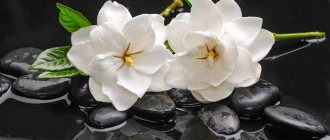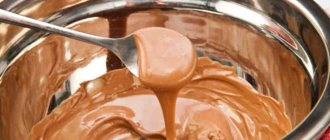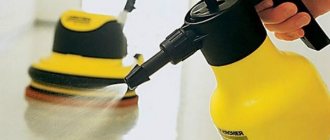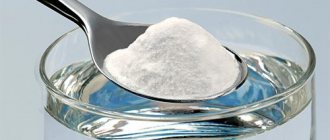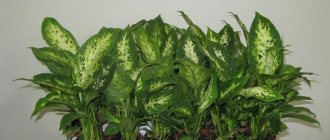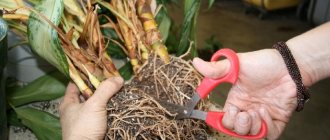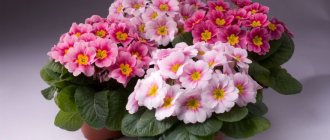Even in the most modest interior of an apartment, luxurious bright gerbera flowers can create coziness and a festive mood. You can, of course, grow garden gerberas in the summer, cut them and collect them into bouquets that will stand in a flower vase in your room for a couple of weeks. But, nevertheless, it is much more interesting to grow this beauty at home in a pot and enjoy its amazing flowering for several months. Good lighting, a mild microclimate in city apartments and knowledge of some of the nuances in caring for indoor gerberas at home will allow anyone to achieve the desired results.
Location
Gerbera loves sunny window sills facing east or west, but will also thrive in other places well lit by diffused sunlight. It should be shaded from direct midday sun, but at other times it simply needs sun. Thanks to its compactness and the chic appearance of its inflorescences, gerbera can decorate any corner of your home. You can find a place for it in the bedroom, in the living room, in the living room and even in the kitchen. It is safe for allergy sufferers. She’s not afraid of drafts, but she loves fresh air - so don’t forget to ventilate her corner regularly. In the summer, the plant can be taken out onto the veranda, balcony or even into the garden, where it will have a great time in the warm season in the open ground.
How does indoor gerbera propagate?
Even knowing how to properly care for a gerbera in a pot, you need to be prepared for the fact that the bush will eventually die. Therefore, you should worry about how to propagate your favorite plant in a timely manner.
Germination of seeds
Gerbera sowing is carried out in March, using containers or seedling boxes (under film cover). As soon as 2-3 leaves appear on the seedlings, the plants dive. When the 5th leaf is formed, the seedlings are placed in separate pots. The soil is immediately watered abundantly; the seedlings will need to be fed in a month.
Note! Propagation by gerbera seeds will not ensure the preservation of the maternal characteristics of the variety.
Rooting cuttings
Cuttings are a more labor-intensive process and less reliable. In order for the bush to reproduce in this way, it must have healthy roots. You will have to cut off a piece of rhizome with stem from the mother plant.
The cuttings are cut, leaving 1-2 leaves. It is necessary to shorten the plates by 1/3. Plant immediately in a separate pot and cover with a glass jar. The cuttings are ventilated daily and the soil moisture is checked. If it dries out, add water to the pan.
Gerbera propagation
When new leaves appear on the stem, the gerbera needs to be completely opened.
Lighting
Gerberas really respect direct sunlight. This is a prerequisite for the formation of a lush crown of leaves and flowering. Only, if the flower is on a south window, it is better to protect it with a curtain or blinds at midday.
The optimal length of daylight for comfortable maintenance of gerbera throughout the year is at least 12–13 hours. Therefore, from approximately mid-autumn to mid-spring, we recommend illuminating the flower to these levels using conventional fluorescent, LED or special phytolamps, placing them at a slight angle at a distance of about 80 cm above the pot. Sufficient lighting is a necessary condition for flowering.
Bloom
The flowering of a plant directly depends on the microclimate of the room and on lighting. In order for flowering to occur on time, you need to know the growth mode of the flower:
- with short daylight hours in winter, the plant enters a dormant phase;
- with lighting 11-12 hours a day in spring and summer, gerbera grows green mass;
- From August to November the plant is in the flowering phase.
When the buds open, it is necessary to feed the gerbera with a solution with a high potassium content. After 3-4 years of active growth, flowering noticeably decreases and the bushes are replaced by young plants. This can be done by dividing the bush.
Some gardeners deliberately provoke crops to bloom in winter by artificially increasing the length of daylight hours. Under such conditions, the gerbera quickly becomes depleted and grows for no more than two years.
Important! After the flowers wither, you need to break them completely to the ground. This will prevent the rosettes from rotting and encourage new growth.
During the flowering period, a large difference between night and day temperatures should not be allowed.
Why doesn't it bloom?
In order for the plant to enjoy flowering next season, it is necessary to provide it with a full rest period in winter. Reasons why gerbera does not bloom:
- The pot chosen was too large when replanting the plant. In this case, the rhizome actively grows, and this draws the flower’s strength away from other processes.
- A pot that is too small is used. The roots do not have enough nutrition.
- The flower is rarely replanted (less than once a year), and the roots do not have time to develop.
- Nitrogen fertilizers are used for feeding. In order for gerbera to bloom well, you need to use potassium and phosphorus.
- The room temperature remains below 12 degrees. In this case, the plant enters a dormant state.
- The plant is over-watered or cold water is used for irrigation. The consequence of such a procedure can be not only the lack of flowering, but also the death of the plant.
Temperature
The optimal temperature during the growing season and flowering is considered to be 20–25 degrees. in the daytime and 18-20 degrees. at night. This corresponds to natural indicators in its homeland. During the winter holidays, the temperature in the room is reduced to 14–16 degrees, while reducing the watering rate. At 12 gr. In warm temperatures, gerberas go into “hibernation”: almost all processes slow down, flowering is excluded. Temperature 8-10 degrees. is critical for home gerbera, although in its native places it can withstand lower temperatures due to the fact that the roots there are, after all, in warmer and more humid layers of soil.
The flower does not like sudden changes in temperature, especially during flowering. The heat is 30 degrees. Gerbera also does not tolerate higher levels well - the inflorescences quickly wither, the leaves lose their tone. On such days, remove the flower to cooler places, shade it, and ventilate the premises more often.
Growing from seeds
You can buy gerbera in a pot at a flower shop, but if you want to grow a flower from the very beginning, you should buy seeds. What to do with them next:
- Small containers (for example, boxes) are filled with substrate.
- Seed material is sown and a little sand is sprinkled on top.
- The soil is sprayed with a spray bottle.
- It is very important to create greenhouse conditions; for this you can cover the crops with glass or film.
- The boxes are placed in a warm and bright place.
The first growths can be seen already on the 7-8th day. During this period, the glass (film) is removed to avoid combustion.
After two full-fledged leaves are formed on the seedlings, you can start picking. The seeds are planted in the spring, and during this year the gerbera will bloom.
Watering
During the growing season and flowering, gerberas in a pot need to be watered regularly, and the amount of liquid with each watering should be approximately the same. The soil in the depths of the pot should be kept slightly moist and slightly dry on the surface of the soil. The ideal watering scheme is as follows: the soil should be damp for 4 days, and then dry for 2 days. On cool days, the dose of water is reduced accordingly, and on hot days – increased.
It is best to pour water around the edges of the pot using a watering can with a long spout. It is not necessary for water to directly fall on the roots, much less on the leaves and inflorescences.
Watering through a tray is also allowed. Just remember to remove excess water that has not been absorbed into the soil from the pan approximately 20-30 minutes after watering.
We recommend loosening the soil in the pot between waterings so that the roots have free access to oxygen.
Water for irrigation should be soft (rain, snow, boiled or standing for 24 hours), at room temperature, not lower than 20 degrees, to avoid the development of fungal infections. Even in the summer heat, you cannot water this plant with cool water - the roots will rot.
This may be interesting: Types and varieties of indoor (house) roses
In autumn-winter, watering should be significantly reduced, as well as the temperature of the flower. Water only after the top layer of soil has dried at least 2-3 cm. You can determine the need for watering using a match or a toothpick, as well as by the appearance of the plant: if the gerbera is “thirsty,” its leaves droop and lose tone.
Diseases and pests
As a result of improper care, the plant may become sick. The most common diseases include:
- Mold . If moldy deposits are detected, you must immediately transplant the plant into new soil and normalize watering.
- Powdery mildew . It is a whitish or grayish coating that spreads throughout the plant. As a result of the disease, buds may fall off. Powdery mildew appears when there is excessive soil and air moisture, increased temperature and excessive fertilizing. To combat the disease, fungicides should be used: Topaz, Previkur and Fundazol. To prevent the appearance, you can use a soda solution, settled onion peels or kefir.
- Late blight . It appears as brown spots on the leaves and their drying out. Late blight is caused by excess moisture and a hot microclimate. To eliminate the disease, you need to replace the soil, stop watering and treat the flower with drugs: Previkur, Profit Gold or Ridomil. The disease can be prevented by spraying the soil with garlic infusion.
- Gray rot . Appears as a result of excessive soil moisture and due to excess nitrogen in the soil and is characterized by the presence of fluffy gray mold on the leaves. In this case, the plant should be treated with fungicides or insecticides: Fundazol, Rovral, Topsin-M.
- Chlorosis . It is characterized by the appearance of a yellow space between the veins on the leaves as a result of impaired chlorophyll formation and a decrease in photosynthetic activity. To eliminate the problem, you need to change the soil, water the plant with acidified water and add chelated iron to the diet. For treatment, the flower bushes are sprayed and the following drugs are applied: Antichlorosis, Ferovit, Iron Chelate, etc.
Lack of moisture can lead to a plant being attacked by pests:
- Whitefly . It is an insect similar to a moth. As a result of its damage, the leaves become deformed and the stems stop growing. The following drugs are used to fight: Aktara, Vertimek, Kinmiks. As a preventive measure, it is necessary to loosen the soil of the plant more often, and you can also use adhesive tape.
- Aphid . As a result of an aphid invasion, the leaves dry out and curl, and flowering stops. Plants are treated with Actofit, Aktara, Vertimek, Iskra, etc. Prevention is treated with infusion of wormwood or lemon.
- Spider mite . Cobwebs appear on the plant, and small dots appear on the leaves. This leads to drying out, falling leaves and stopping flowering. All infected greenery is torn off from the gerbera and the flower is washed with soap and soda solution, then treated with Nissoran and Actellik.
The video details possible diseases and pests of gerbera, as well as methods of control and prevention:
Air humidity
Gerbera does not tolerate dry air well. The optimal humidity level for it is 70–80%. If the indicators are greatly reduced, especially during the heating season, the humidity must be increased by all available means. It is not advisable to spray the plant itself - neither the leaves nor the flowers like it. But regularly spraying the space surrounding the flower, creating a water suspension or fog around the gerbera, is very necessary. There are other ways to increase indoor humidity, for example:
- place the pot in a deep tray, at the bottom of which is a layer of wet expanded clay, pebbles, sphagnum moss or coconut fiber;
- cover the radiators with wet towels;
- create a gerbera “company” of other plants that evaporate moisture from the leaves;
- Place wide containers of cool water around the gerbera;
- Buy a household humidifier and use it.
If the humidity in the room, on the contrary, is too high, above 80-85%, this will make the gerbera vulnerable to fungal and other infections, especially in winter. In this case, ventilation, reducing the amount of watering, and canceling spraying will help.
Potting Guide
If there is a need to rejuvenate the plant, it is removed from the pot and the bush is divided into parts. This procedure is best performed after flowering, before the gerbera goes to bed. The planned annual planting in a larger container takes place in the spring. In this case, a step-by-step algorithm is followed:
- a layer of expanded clay, broken brick or ground stones is placed in a new pot;
- the plant is carefully removed from the old container by transshipment and relocated along with the earthen lump;
Important! During the replanting process, it is important not to damage the roots, otherwise the gerbera will get sick or will not be accepted into the new pot at all.
- the space between the earthen lump and the walls is filled with fresh substrate.
In the process of transplantation
All that remains is to water the plant and put it in its permanent place. The first days after transplantation, the bush requires special attention.
The soil
To grow indoor gerbera, it is best to purchase ready-made store-bought universal soil for flowering indoor plants. In the wild in South Africa, gerbera grows in soils rich in minerals but almost devoid of organic matter.
It is also possible to prepare the substrate yourself. It should be nutritious, loose, with a slightly acidic reaction. Mix leaf soil, peat chips, coarse sand (or sphagnum moss), small pieces of charcoal in a ratio of 2:1:1:1. Add some pine bark. It is important that the soil does not contain humus or compost - a minimum of organic matter! (They may burn the tender gerbera roots). The soil mixture of the specified composition will be quite fertile and permeable, it will provide free access of air to the root system of the plant.
How to choose when buying in a store?
When choosing a flower in a store, you should pay attention to the color and shape of the leaves. They must be of the correct shape and have a uniform color. It is best to buy a young plant , as it will quickly adapt to new conditions.
You should not choose a gerbera that was close to the door or window - in such places there are sudden changes in temperature, and this may later affect the condition of the flower.
When inspecting the plant, you should make sure that there are no insects or damage on it, and that there are no visible signs of disease.
It is necessary to check the condition of the soil. If the flower is easily reached, this indicates a violation of watering and the death of the root system.
Thus, home gerbera requires special, but not complicated care. The main thing is to observe the temperature regime, soil and air humidity, monitor the lighting and periodically feed the plant. Then it will delight you with inflorescences several times a year.
Gerbera transplant
The bright life span of indoor gerberas is short, only 3–4 years. Then the bushes lose their decorative properties and bloom less frequently and sparingly. Through reproduction, young specimens are grown, and old ones are thrown away. Therefore, you will only have to do the transplant a couple of times.
Replanting after purchase
The first transplant is carried out soon after purchasing the flower, since a store-bought transport pot and the substrate in it are not suitable for long-term cultivation of the flower. Plan this procedure 2-3 weeks after purchase - this time is enough to adapt the gerbera to new conditions. You will need to remove the flower from the shipping pot and shake off or scrape off as much of the store-bought substrate as possible with a wooden stick. Do not trim or pick off the gerbera roots. It is better to disinfect the prepared pot, even if it is completely new.
There should be drainage holes at the bottom of the pot, then a layer of drainage made of expanded clay (pebbles, crushed stone, pieces of polystyrene foam, small ceramic shards) at least 2-3 cm thick. Next comes a layer of fresh, preferably sterilized substrate (about a third of the pot) . Place the bush on the substrate in the center and carefully fill the roots along the edges of the pot. Make sure that the root collar is not buried. The root rosette should rise 2-4 cm above the ground surface.
The transplant should be done during the dormant period, when the gerbera does not bloom. If you were given a pot of blooming gerbera, then it is better to leave it in the same pot so as not to disturb the flowering process and not spoil your pleasure. Replant after the plant has finished flowering.
Planned transplant
You will have to plan the next transplant for next year, when the gerbera has grown enough. The optimal time for transplantation is the end of the dormant period. This is approximately from the end of February to mid-March. Some gardeners recommend replanting after flowering has ended, somewhere in late autumn. We are for the first option.
- Replant the gerbera using the transshipment method, while trying to disturb the roots as little as possible.
- After transplanting, compact the substrate and water it moderately. Place the flower pot in the shade for 3–5 days to prevent direct sunlight.
- If after a week the transplanted gerbera bush does not look cheerful, as if it has not yet recovered from stress, spray the surrounding air and build a greenhouse around the flower, for example, from polyethylene. Let the plant in it grow stronger and begin to grow. Get rid of accumulating condensate in a timely manner by ventilation, so as not to provoke the development of rot.
This may be interesting: Indoor pomegranate (dwarf) - home care
Carry out the first feeding no earlier than a month after transplantation. Use mineral nitrogen-containing fertilizers that stimulate the flower to actively grow green mass.
Description and photo of a houseplant
Indoor gerbera is a perennial, magnificently flowering plant. The foliage is collected in a small basal rosette. The flowers, which look like large chamomiles, are a huge advantage. The color palette is surprising, it is so diverse that you can grow a whole rainbow on your windowsill. There is no blue tint.
Indoor gerbera is low-growing and takes an average of 3-4 years to grow. Then its development and flowering decreases, and the flower is replaced with a new specimen.
Look at the photo of what an indoor gerbera looks like.
What kind of pot do you need?
The diameter of the pot should not be too large, only 2–3 cm wider than the root system of the flower. Crowding in a pot is one of the conditions for abundant flowering of gerberas. Volume - approximately 1–1.5 liters.
A deep pot made of unglazed ceramics is best suited for gerberas - this will allow air to pass well to the roots of the plant. But in winter, on a cold windowsill, the roots of the gerbera in such a pot can become hypothermic. This should not be allowed, because gerbera is very sensitive to this. In this case, foam or a wooden stand under the pot for thermal insulation will help.
Problems during cultivation
When growing gerberas, gardeners may encounter problems such as wilting foliage. This happens for the following reasons:
- Lack of moisture . In this case, you just need to water the flower; if the leaves straighten, it means that the plant did not have enough liquid.
- Excess moisture . This problem can arise when transplanting a plant into a new container and leads to acidification of the soil and rotting processes.
- Presence of peat in the soil mixture . Peat takes moisture from the soil and does not release it to the plant.
As the flower grows, the leaves may also turn pale . This happens when there is excessive lighting. To avoid the problem, you need to shade the plant from the midday rays of the sun. If the leaves lighten after purchasing a flower, this may be due to getting used to new conditions or to poor lighting.
Why do the leaves turn yellow?
When the leaves turn yellow and fall off, this indicates rotting of the root system due to excessive watering or air humidity. To save the plant, you need to dry the soil and water it moderately. If this does not solve the problem, then the flower should be replanted, removing the rotten roots.
Yellowness of leaves can also appear in the following cases:
- lack of room lighting;
- dry air;
- water getting into the plant outlet when watering;
- excessive dryness of the soil;
- non-compliance with spraying rules;
- watering with cold water.
If the appropriate maintenance conditions are observed, problems can be avoided, and if they have already arisen, the care of the plant can be adjusted.
The reasons for the yellowing of gerbera leaves are described in the video:
How to achieve lush flowering?
The abundance of gerbera flowering directly depends on compliance with the growing rules:
- Lighting . In order for the flower to bloom well, it is necessary to maintain a daylight hours of 12 hours. The most abundant flowering is achieved during the period of natural light from August to November.
- Feeding . It is better not to use large amounts of nitrogen-containing fertilizers. They should be replaced with mineral fertilizer, which includes potassium and phosphorus.
- Transplant . When replanting a plant, you need to choose the right size of the pot so that it is not too cramped or large.
Fertilizers
Fertilizing is applied only during the active growing season. From the beginning of spring to the end of November, the plant is fertilized every 1.5–2 weeks. Indoor gerbera does not like natural organic matter. It is preferable to feed with mineral supplements. Purchased complex fertilizers for flowering plants (Master, Uniflor, Florovit, Agricola) are suitable. We recommend halving the concentration of the product in the solution compared to the instructions.
Pay attention to the composition. During different periods of gerbera development, use a specific composition of fertilizer. For example, during the growth of green mass, fertilizers should contain more nitrogen components. During flowering - potassium and phosphorus. It’s good if iron is included in the fertilizer, since indoor gerberas also need it. You will learn about its deficiency in the soil by pale yellow spots spreading on the leaves, indicating the development of chlorosis. Rusty nails buried in a pot help. Among chemical agents, you can use Micro-Fe and Ferovit preparations.
What does an indoor gerbera look like?
In its natural environment, the flower reaches impressive sizes. Large gerbera inflorescences are similar in appearance to garden chamomile, but only with bright petals in warm shades. A variety with double flowers can be mistaken for an aster from a distance.
Indoor gerberas
The culture belongs to the perennial Compositae plants. For indoor cultivation, breeders developed indoor gerbera - a compact bush no more than 0.3 m high.
Flowers grown for home use differ in the shape of the inflorescences and the shades of the petals. But the basic structure of all representatives of this species of Astrov is the same.
External signs of gerberas
| Characteristics | Description |
| Stem | Single shortened strong peduncle, the average height of which is 20-25 cm |
| Leaves | Large, elongated, pubescent, light green in color. Collected in a basal rosette. The pinnately dissected plates have notched wavy edges |
| Flowers | Large, up to 5 cm in diameter, in the form of a bright colorful basket. The shades contain almost all the colors of the rainbow (except blue). According to the number and arrangement of petals, the inflorescences of gerberas are simple, double and semi-double. In some varieties the core is light (usually yellow), in others it is dark |
| Rhizome | Powerful, consisting of a large number of cord-like roots |
After flowering, the plant produces a seed-bearing fruit, 1 g of which can contain from 300 to 500 small grains. They can be collected for subsequent propagation of new bushes.
Reproduction of gerbera at home
Gerbera readily reproduces in captivity in several ways. Let's look at them in order.
Dividing the bush
This is the easiest way to get a new gerbera bush from a healthy plant at the age of 3-4 years, on which several basal rosettes have formed. In the spring, when replanting a flower, it is divided into parts so that each has 2-3 growth points (at least one) and part of the root system. The root system should first be soaked for 2–3 hours in warm water, slightly pink from potassium permanganate. Afterwards, the roots should be carefully cleaned from the soil and unraveled, if possible, by hand. Divide the roots with a clean knife or scissors. Sprinkle all cuts with crushed charcoal (activated) charcoal or cinnamon.
Transplant the bushes obtained by dividing into separate small pots filled with a substrate suitable for adult gerberas, and water. Carry on with your care as usual. When replanting, make sure that the growing points are 2-3 cm above the soil surface. Rooting takes a long time, from six months to a year, then flowering can occur only 10-12 months or the next year after replanting.
By cuttings
This method is less effective - the cuttings often rot. But you can try. Cut a part of the stem diagonally from the plant, about 10 cm in length, with 2-3 leaves. It is possible to root the cuttings in sand, perlite or vermiculite, covering the container on top with a plastic bag or glass cup (jar), maintaining high humidity, a temperature of 25–27 ° C and, if possible, bottom heating. When a new leaf appears on the cutting, we can assume that rooting was successful. Now the cutting can be transplanted into a pot with suitable soil and cared for as an adult plant.
Growing from seeds
Growing gerbera at home from seeds is a rather complex and time-consuming method. Moreover, it does not guarantee the preservation of the main varietal characteristics of the flower, such as dwarfism, double petals, their shades and other “highlights” of the variety. However, you can collect the seeds yourself or purchase them at the store. Seeds retain good germination rate (more than 50%) for six months. If the seeds are more than eight months old, there is no point in planting them. Gerbera specimens grown from seeds will bloom only after two years.
The optimal time for sowing seeds is from late January to March. Sow seeds in containers or other containers from which you can build a greenhouse. As a substrate, use a mixture of sand and peat chips, which must be well moistened before planting.
- Spread the seeds over the surface without burying them, sprinkle with a thin layer of fine sand on top.
- Close the lid of the container (cover the container with glass or film). Keep in a dark, warm place until germination. Ventilate daily to remove condensation. After 8-10 days, the first shoots will begin to appear.
- Now move the greenhouse to a bright place at a temperature of 18-20 degrees. Protect from direct sunlight.
- When the second true leaves appear on the seedlings, they should be planted in small plastic cups (drainage holes and a drainage layer are required!), and into the same substrate. Try to harm the roots as little as possible.
- When young gerberas have 4–5 leaves, they should be transplanted into pots with a diameter of 9 cm in a substrate suitable for adult gerberas. Then take care as usual.
Reproduction methods
There are two ways to propagate gerbera at home:
- seed;
- dividing the bush.
How it all happens:
- Seed propagation. Seed material can be purchased at a flower shop.
For planting you will need a wooden container. The seeds are deepened by 3 centimeters and irrigated with water. Cover with glass to create a greenhouse effect. Full shoots will appear in 2 weeks. When the seedlings get stronger, pick them. Pots are chosen no more than 10 centimeters in diameter. Planting is best done from February to April. - Dividing the bush. You can divide the rhizome at the time of transplantation, in the spring.
The plant must be mature (from three years old). The gerbera is carefully removed from the container, the remaining soil is removed from the root system, and the rhizome is cut into 5 parts. Each new specimen must have at least a couple of growth points. New plants are planted according to the standard scheme.
Why do indoor gerbera leaves turn yellow and dry: what to do?
Gerbera leaves turn yellow and dry if they are attacked by pests :
- Whitefly . The plant should be treated with a preparation containing permethrin.
- Spider mite . To get rid of it, spray the leaves 2-3 times a day with clean water. If this does not help, you need to use the drug Actellik
Important: Yellowing occurs when overwatering. Reduce watering if your gerbera begins to wilt and turn yellow.
Popular types and varieties
Thanks to the efforts of breeders, there are more than a thousand varieties of this wonderful flower.
Almost all hybrid varieties were given birth to two South African species - Green-leaved gerbera and Jameson's gerbera. But the breeders' work is far from over. If you open the Internet and find numerous photos of gerberas, you will not see blue flowers. Despite numerous attempts, no one has yet succeeded in breeding the blue gerbera.
Photo: https://pixabay.com/photos/gerbera-pink-flower-blossom-bloom-1261380/
While breeders are busy developing new varieties, let's look at the already known ones. And there are simply an incredible variety of them! It would be more expedient to distinguish several groups and indicate the most popular varieties among domestic flower growers.
By color
There are several of them:
- white – “Marlene”, “Polaris”;
- pink - “Rosalyn”, “Lancaster”;
- yellow - “Helios”, “Brigitta”, “Elegance”, “Tamara”;
- orange - “Alice”, “Mirage”, “Rudite”, “Orange Beauty”, “Sympathy”, “Rusinsh”;
- red – “Romeo”, “Veronica”;
- with a black core - “Arendgost”, “Vincent”.
By flower size
There are these:
- small with narrow petals - dark cherry “Alcor”, intense pink “Aldebaran”;
- large, narrow-petaled - orange-yellow “Vega” and “Saturn”, yellow “Jupiter”, bright pink “Migar”;
- large medium-petalled – red “Mars”;
- large with wide petals - red “Alamak”, “Delios”, “Peter”, orange-yellow “Markal”.
By petal type
The following are distinguished:
- double and semi-double with narrow petals - pink “Viola”, yellow “Kalinka”, scarlet “Sonya”;
- double and semi-double broad-petalled - dark red “Iskra”.
Dwarf varieties
The key feature is that the length of the peduncle does not exceed 25-30 cm, ideal for growing in pots:
- Hummingbird ("Hummingbird");
- Happipot;
- Durora mix;
- Parade.
Temperature and humidity
Proper care of indoor gerberas also includes observing temperature restrictions. Although this is a fairly hardy plant, there is still no need to overuse it. Having entered a dormant period, Transvaal chamomile (another name for a flowerpot) may stop blooming altogether. The optimal conditions for its cultivation are:
- in winter at least 11-14°C;
- in the warm season from 20 to 25°C;
- limit the possibility of frequent temperature changes;
- provide relatively high humidity.
It is not recommended to keep the plant on the balcony in winter. Dampness and cold put the gerbera in a sleepy state. Over time, she may just die.
The homeland of this flower is Africa (Madagascar Island), as well as Asia. In this regard, it is important to take into account that the climate in those parts is tropical. Therefore, it is best to create natural living conditions for an indoor gerbera flower.
